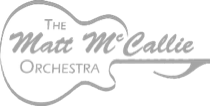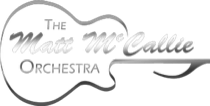The 2015 Stevie Wonder Tour
The Album
Released September 28, 1976 by Motown Records, Songs in the Key of Life was Stevie Wonder's eighteenth studio release. It surpassed commercial expectations by reigning on the charts and won a grammy award for album of the year. Rolling Stone magazine lists Songs in the Key of Life as one of the five hundred greatest albums of all time. One hundred and thirty people worked on the album including other musical greats such as Herbie Hancock and George Benson.
The Songs
Some of the album's most recognizable tracks include Sir Duke, I Wish, Isn't She Lovely, If It's Magic, and As. Stevie performed on vocals, harmonica, drumset, percussion, and keyboards such as bass synths, Fender rhodes, clavichord, and other instruments.
Celebrity Influences
Stevie Wonder has influenced countless musicians. Songs in the Key of Life in particular made a huge impression on some
Scottrade Center 10-25-2015
Stevie Wonder brought his famous album and its tour back to life for another tour and included St. Louis, MO as one of his performance destinations. This was a concert not to be missed and the turnout was impressive. Far more impressive was the show, the instrumentation, and the level of musicianship on stage.
I was privileged to attend. My seat was literally the very highest, back row seat of the venue with my head resting against the concrete wall. Getting to my seat felt a little like mountain climbing as I ascended the incredibly steep stairs up to the very top. From this range it was difficult to make out exactly who was playing what instruments but when the cameras would zoom and pan I attempted to take account of what was on stage.
The stage was enormous and from such distance I at first thought he only had a small band. But as the show progressed and the cameras zoomed I kept counting more musicians. My first surprise was that he had a live strings section. My distance from the big screens was still significant so even those looked relatively small but it appeared there were at least ten string players.
Strings
I couldn't determine how many first and second violinists there, nor how many violists, but I counted two cellists. They were configured in two rows and had their own conductor. At one point I remember the front edge string player in the back row had their bowings backwards from everyone else's for several measures. And I could see that their music appeared to be written with Sibelius, the same notation software primarily used by The Matt McCallie Orchestra. They also used the same music stand lights as The Matt McCallie Orchestra.
Two days after the show I learned that one of the finest musicians I know, Adrian Walker, was the concertmaster that evening. Sitting as far away as I was I wasn't sure if it was him, but it was! Very excited for him! Adrian made a huge impression on me the very first time I sat next to him when both of us were hired to play violin in a pit orchestra.
Bass
A big man played electric bass. It was at least a five string and packed tremendous power. The bass playing was tight but the audio engineers turned up the bass so loud that it overwhelmed much of the band. Low pitched plucks and slaps were difficult to distinguish from the kick drum.
Drums & Percussion
Drums were tight and glued to the bass all night. But the kick drum was the worst amplified instrument of the show. Kick drum was louder than any other instrument. And in that giant venue, just like the bass, every note of the kick drum resonated far beyond the note being played.
The rest of the drumset was challenging to hear. Hi-hat and cymbals were low in the mix, but the next audible sound in the drumset. Snare was surprisingly low in the mix and tuned lower than I would have expected for the funk, jazz, soul, and R&B being played. Unless they were played very aggressively toms were very hard to hear.
There were at least two stations of auxiliary percussionists. Wind chimes, congas, shakers, and other instruments were present as heard on the original album.
Vocalists
The background singers almost stole the show. Stevie intentionally showed off their incredible abilities. Each of the six vocalists were showcased individually, sometimes singing pieces of other famous songs like Besame Mucho, Smokey Robinson, and other familiar music. Stevie also challenged each of them to riff with him. They all interacted with Stevie in humorous and vocally impressive ways.
Each singer had a unique voice. One from Egypt announced she has a current top ten hit in her home country. All of the singers were female except one. As different as their voices were they all had very similar stylistic techniques with very fast vocal runs, quietly sung low and mid ranges, and belting upper ranges.
What was most surprising about all of the background vocalists was the complete lack of microphone technique. It was almost as if they had been instructed to only hold the microphone directly in front of their mouths when they sang and since they also had limited dynamics of being quiet when singing low and loud when singing high there was no control of dynamics. There was no smoothness, no middle ground. It was either loud and high or soft and low. It was bizarre.
A choir also made an appearance a few times.
Horns
Horns were used surprisingly little. And almost all night they were very low in the mix. They had a six piece horns section seated in the very back row. It looked like there was one trombone, three trumpets, and two saxes. They were amazing. Their intonation, blend, and rhythmic tightness was immaculate. Probably the best horn section I have ever seen or heard live.
Stevie
There was little left to Stevie's speaking voice. And he was literally incapable of singing the low pitched notes on some songs. His speaking voice often wavered, faded, and fried Surprisingly, he did a lot of talking.
Harmonica and guitar?
Guitars
Two guitar players performed on nearly every song. At one point they played a challenging guitar solo in near perfect unison. Had I not seen them both playing on the screen, it would have nearly sounded like only one person playing. Very impressive.
Sir Duke
This was one of the most exciting songs of the evening. Stevie encouraged the audience to sing "na-na-na" on the opening horn riff. The audience response was enthusiastic.
What was strange to me about the performance of this song was that the horns were barely audible during the intro. That introductory horn riff is the arguably the most recognizable part of the song. The kick drum overwhelmed the horns.
Stevie Wonder played Sir Duke medleyed straight into I Wish, just like The Matt McCallie Orchestra has been doing for years. Great minds thinking alike.
Isn't She Lovely
The Matt McCallie Orchestra often performs this song early on in performances as a good warm-up piece. Our version is a more laid back R&B slow jam version that still plays the riffs, has a smooth solo section, and nicely features the vocals.
Stevie performed the song in the familiar way, even with the baby crying at the beginning. What made the song more interesting was the backstory Stevie shared. He had actually written two songs for his first born daughter, Aisha. Isn't She Lovely was the only one he finished. He never completed the lyrics for the other. He also spoke proudly about how Aisha had just delivered another grandchild the day before.
If It's Magic
I had hoped a live harpist would accompany Stevie on this song. Instead, he sang along with a recording of the original track. What made it more endearing was how kindly he spoke about Detroit jazz harpist Dorothy Ashby, who had been recommended to him by Bill Withers. He spoke about how sad her passing to cancer was to the music community.
Dorothy Ashby played multiple instruments in high school, focusing on piano in college. In later years she pioneered the harp as a veritable jazz instrument and formed a trio that performed regularly at weddings and other events. Her recordings are still being sampled in songs by modern artists and for films such as Jurassic 5.
My favorite cover of If It's Magic is by the amazing Marlon Saunders, who has worked as a vocalist with Stevie Wonder. Another notable cover was a live performance in 2015 by Usher.
Superstition
Superstition was not on the Song in the Key of Life album but as the concert was drawing to its close it very much felt like the song needed to be performed.
Other Observations
The show finally started about thirty minutes behind schedule. Stevie was accompanied about halfway to where his keyboards were setup on stage where he then paused to talk to the audience for several minutes. His message was very well received by the audience as he spoke about Ferguson. During the night he also told stories about the history of music and some of his experiences on the road and with friends and family.
Stevie also spoke about how influential his teachers were from an early age. He advocated music education in schools, urging districts to stop cutting their music programs. His comments were insightful and supportive.
Intermission felt long. I didn't time it but it felt close to forty minutes long.







